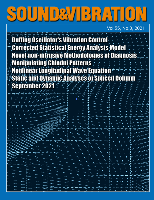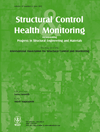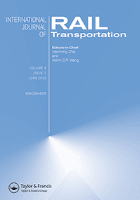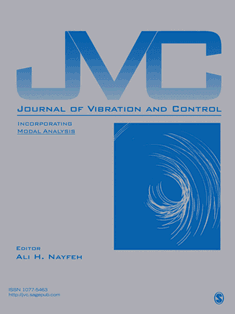
Railway Engineering Science
Scope & Guideline
Pioneering Solutions for Modern Railway Challenges
Introduction
Aims and Scopes
- Railway Infrastructure and Materials:
Research focused on the development and evaluation of materials used in railway construction, including ballast, sleepers, and subgrade systems, emphasizing durability and performance under various conditions. - Railway Safety and Monitoring Technologies:
Studies on methodologies and technologies for ensuring railway safety, including damage detection, monitoring systems, and predictive models for assessing infrastructure integrity. - Dynamic Interaction and Performance Analysis:
Investigations into the dynamic interactions between trains and track systems, including the effects of train speed, track irregularities, and environmental factors on performance and stability. - Sustainable and Innovative Technologies:
Exploration of new technologies such as hydrogen fuel cells, hybrid systems, and recycled materials in the context of enhancing the sustainability of railway operations. - Noise and Vibration Control:
Research on the mechanisms and mitigation strategies for noise and vibrations generated by railway systems, including the use of advanced modeling techniques and experimental studies.
Trending and Emerging
- Smart Monitoring and Predictive Maintenance:
An increasing emphasis on smart monitoring systems, including the use of machine learning and artificial intelligence for predictive maintenance of railway infrastructure, highlighting the integration of technology for proactive safety measures. - Sustainable Practices in Railway Engineering:
A growing trend towards sustainable practices, including the use of recycled materials and alternative fuels, as the industry seeks to reduce its environmental impact and enhance energy efficiency. - Advanced Simulation and Modelling Techniques:
There is a rise in the application of advanced simulation and modeling techniques, including finite element analysis and computational fluid dynamics, to better understand complex interactions in railway systems. - Seismic and Environmental Resilience:
Research focusing on the resilience of railway systems to seismic events and environmental challenges is gaining traction, reflecting an increased awareness of climate change and its impact on infrastructure. - Intermodal and Network-Level Dynamics:
An emerging interest in intermodal transport systems and the dynamics of railway networks, examining how railways interact with other modes of transport to optimize overall efficiency and connectivity.
Declining or Waning
- Traditional Mechanical Systems Analysis:
There has been a noticeable decrease in research centered on purely mechanical systems analysis without integration of modern computational techniques, reflecting a shift towards more sophisticated modeling approaches. - Static Load Assessments:
Research focusing exclusively on static load assessments of railway systems is becoming less prominent, likely due to advancements in dynamic analysis techniques that provide more comprehensive insights. - Conventional Energy Systems:
Research on traditional energy systems for railways is waning as there is a growing emphasis on electrification and alternative energy sources, leading to a reduced focus on conventional diesel-powered systems. - Basic Material Testing:
Studies that involve only basic testing of railway materials without exploring innovative applications or modifications are declining, as the field increasingly prioritizes advanced material technologies and their practical applications.
Similar Journals

Baltic Journal of Road and Bridge Engineering
Where Engineering Meets Innovation: Explore the Future of InfrastructureThe Baltic Journal of Road and Bridge Engineering, published by RIGA TECHNICAL UNIV-RTU, serves as a pivotal platform for disseminating cutting-edge research in the fields of building and construction as well as civil and structural engineering. Established as an Open Access journal since 2006, it fosters global collaboration and accessibility to critical engineering knowledge, facilitating the exchange of innovative ideas among researchers, professionals, and students. With a commendable impact factor and recognition in Scopus rankings, where it stands in the third quartile for both relevant engineering categories, the journal underscores its significance in advancing the discipline. The journal aims to publish high-quality, peer-reviewed articles that address contemporary challenges in road and bridge engineering, making it an essential resource for anyone involved in infrastructure development and research. Located in Lithuania at 6B Kipsalas Street, RIGA LV-1658, this journal not only highlights the latest advancements but also seeks to inspire future innovations in engineering practices.

Science China-Technological Sciences
Fostering Global Knowledge in Engineering ExcellenceScience China-Technological Sciences, published by SCIENCE PRESS, is a leading academic journal dedicated to the advancement of knowledge across various fields of technology and engineering. With an impressive Q1 ranking in Engineering and Q2 in Materials Science as of 2023, this journal is well-regarded for its rigorous peer-reviewed articles and significant contributions to the realm of scientific innovation. Utilizing an open access model, the journal ensures that research findings are readily available to scholars and practitioners globally, fostering collaboration and dissemination of cutting-edge technological advancements. Based in China, the journal promises a comprehensive coverage of topics bridging theoretical frameworks and practical applications, making it an essential resource for researchers, professionals, and students aiming to stay at the forefront of technological sciences.

INTERNATIONAL JOURNAL OF AUTOMOTIVE TECHNOLOGY
Exploring New Horizons in Automotive AdvancementsINTERNATIONAL JOURNAL OF AUTOMOTIVE TECHNOLOGY, published by the Korean Society of Automotive Engineers (KSAE), stands as a key platform in the field of Automotive Engineering since its inception in 2000. With an ISSN of 1229-9138 and an E-ISSN of 1976-3832, this esteemed journal aims to disseminate cutting-edge research, innovative methodologies, and advancements in automotive technology. As of 2023, it holds a distinguished Q2 quartile ranking in the Automotive Engineering category on Scopus, featuring a competitive rank of 48/125, illustrating its recognition among peers and the academic community. The journal also enjoys a global readership despite its base in South Korea. Researchers, professionals, and students in the automotive sector are encouraged to contribute to this journal, thus promoting collaboration and knowledge exchange that fosters innovation and progress in automotive engineering. Additionally, the journal is committed to enhancing accessibility of knowledge across boundaries and aims to continue serving as a catalyst for academic growth up to the year 2024.

SOUND AND VIBRATION
Advancing the Frontiers of Acoustics and Mechanical EngineeringSOUND AND VIBRATION, published by TECH SCIENCE PRESS, is a pivotal journal in the fields of Acoustics and Ultrasonics, Mechanical Engineering, and Safety, Risk, Reliability, and Quality. With an ISSN of 1541-0161, this journal has been a reliable source of innovative research and developments from its inception in 1976 through to 2024. Although it currently ranks in the Q4 category on Scopus, it serves as a vital platform for the dissemination of studies focusing on sound and vibration phenomena, contributing to the understanding and advancement of engineering principles. Researchers and professionals are encouraged to utilize this journal to gain insights into critical acoustic applications and mechanical dynamics. While SOUND AND VIBRATION does not operate under an Open Access model, it remains a valuable asset for anyone committed to exploring the various ramifications of sound and vibration in engineering and applied sciences.

Structural Concrete
Transforming Construction Practices Through ResearchStructural Concrete, published by ERNST & SOHN, is a premier journal dedicated to the field of Civil and Structural Engineering, focusing on innovative research and advancements in concrete materials and technologies. With an impressive impact factor and a consistent ranking in the Q1 category of both Building and Construction and Civil and Structural Engineering, the journal stands as a vital resource for researchers, professionals, and students alike. It is indexed with notable Scopus ranks, underscoring its significance within the academic community. The journal spans a comprehensive scope (from 2001 to the present) that encompasses diverse topics related to the behavior, design, and application of structural concrete. Although not an open access publication, it offers valuable insights and cutting-edge knowledge that contribute to the ongoing evolution of construction practices and materials science. Structural Concrete is an essential platform for sharing pioneering findings and fostering collaboration within this dynamic field.

International Journal of Heavy Vehicle Systems
Pioneering Research for a Sustainable Automotive FutureThe International Journal of Heavy Vehicle Systems, published by INDERSCIENCE ENTERPRISES LTD in the United Kingdom, is a pivotal resource for professionals and researchers in the fields of automotive and mechanical engineering. With an ISSN of 1744-232X and an E-ISSN of 1741-5152, this journal serves as an academic platform dedicated to exploring the latest innovations and technologies pertaining to heavy vehicle systems, including design, performance, and environmental impact. Boasting a Category Quartile of Q3 in both Automotive and Mechanical Engineering as of 2023, it ranks among the growing body of literature in these disciplines, indicative of its commitment to quality research. The journal is widely accessible through diverse open access options, encouraging the dissemination of knowledge within the academic community. By publishing cutting-edge studies and reviews, the International Journal of Heavy Vehicle Systems plays an essential role in advancing our understanding of heavy vehicle technologies, providing invaluable insight for engineers, researchers, and students eager to contribute to this dynamic field.

Structural Control & Health Monitoring
Fostering Collaboration in Structural Engineering ExcellenceStructural Control & Health Monitoring, published by John Wiley & Sons Ltd, is a premier academic journal dedicated to advancing the fields of structural engineering, building and construction, and mechanics of materials. With a commendable Q1 status in three key categories and a strong presence in the scientific community, this journal boasts an impressive ranking of #20 in Building and Construction and #35 in Civil and Structural Engineering, reflecting its significant impact and relevance. Since transitioning to Open Access in 2023, the journal provides unrestricted access to innovative research, promoting a wider dissemination of crucial findings and methodologies. It specializes in the dissemination of advancements in health monitoring techniques, structural integrity evaluation, and control systems, aimed at researchers, professionals, and students seeking to enhance their understanding of contemporary challenges in structural management. With converged years spanning from 2004 to 2024, Structural Control & Health Monitoring remains committed to fostering a collaborative environment where cutting-edge research meets practical applications, positioning itself as an essential resource for those at the forefront of the engineering discipline.

International Journal of Rail Transportation
Pioneering research for the next generation of rail systems.International Journal of Rail Transportation is a premier academic publication dedicated to advancing the field of rail transportation, published by Taylor & Francis Ltd. With an impressive convergence of scholarly contributions from 2013 to 2024, the journal aims to disseminate high-quality research and innovative ideas in automotive engineering, mechanics of materials, and transportation. The journal proudly holds a Q1 ranking in both Automotive Engineering and Mechanics of Materials for 2023, as well as a Q2 ranking in Transportation, signifying its impact and relevance in the respective disciplines. Additionally, it is recognized within the top percentiles in its Scopus rankings, affirming its commitment to producing significant insights that inform both academic and industrial practices. While currently not open access, the journal strives to connect researchers, professionals, and students with cutting-edge developments in rail transportation. By fostering collaboration and knowledge sharing, the *International Journal of Rail Transportation* serves as an essential resource for those seeking to push the boundaries of transport engineering and contribute to sustainable infrastructure solutions.

COMPUTER-AIDED CIVIL AND INFRASTRUCTURE ENGINEERING
Innovating Solutions through Computational ExcellenceCOMPUTER-AIDED CIVIL AND INFRASTRUCTURE ENGINEERING, published by WILEY, stands as a leading journal in the domains of civil and structural engineering, computational theory, and computer-aided design since its inception in 1986. With an impressive ISSN of 1093-9687 and E-ISSN of 1467-8667, this esteemed UK-based journal holds a prestigious position in the academic community, reflected by its Q1 ranking in numerous relevant categories, including Civil and Structural Engineering and Computer Graphics as of 2023. The journal is renowned for promoting innovative research that utilizes computational techniques to solve complex engineering problems, making it an essential resource for researchers, professionals, and students alike. Despite its lack of open access options, the journal garners significant interest due to its rigorous peer-review process and high-impact articles, underlining its importance in the advancement of infrastructure engineering practices and technologies. With a Scopus ranking placing it among the top journals in various engineering and computer science fields, COMPUTER-AIDED CIVIL AND INFRASTRUCTURE ENGINEERING continues to foster knowledge and collaboration, ultimately contributing to the future of smart and resilient infrastructure development.

JOURNAL OF VIBRATION AND CONTROL
Advancing the Dynamics of InnovationJOURNAL OF VIBRATION AND CONTROL, published by SAGE PUBLICATIONS LTD, is a distinguished peer-reviewed journal that serves as a pivotal resource for researchers and professionals in the fields of aerospace, automotive, materials science, and mechanical engineering. Since its inception in 1995, this journal has been instrumental in disseminating cutting-edge findings on the dynamics of vibrations and control systems, addressing both theoretical developments and practical applications. With an impressive array of impact metrics—ranking in the top quartile (Q2) across various engineering categories—it ensures that high-quality research is accessible to its audience, fostering innovation and collaboration. Although currently not an open-access journal, it remains influential within its domain, indexing a breadth of topics that bridge fundamental science and engineering practices. Researchers and students interested in exploring the dynamics of materials and structures will find the JOURNAL OF VIBRATION AND CONTROL an invaluable tool for advancing their knowledge and contributing to ongoing discussions in the field.